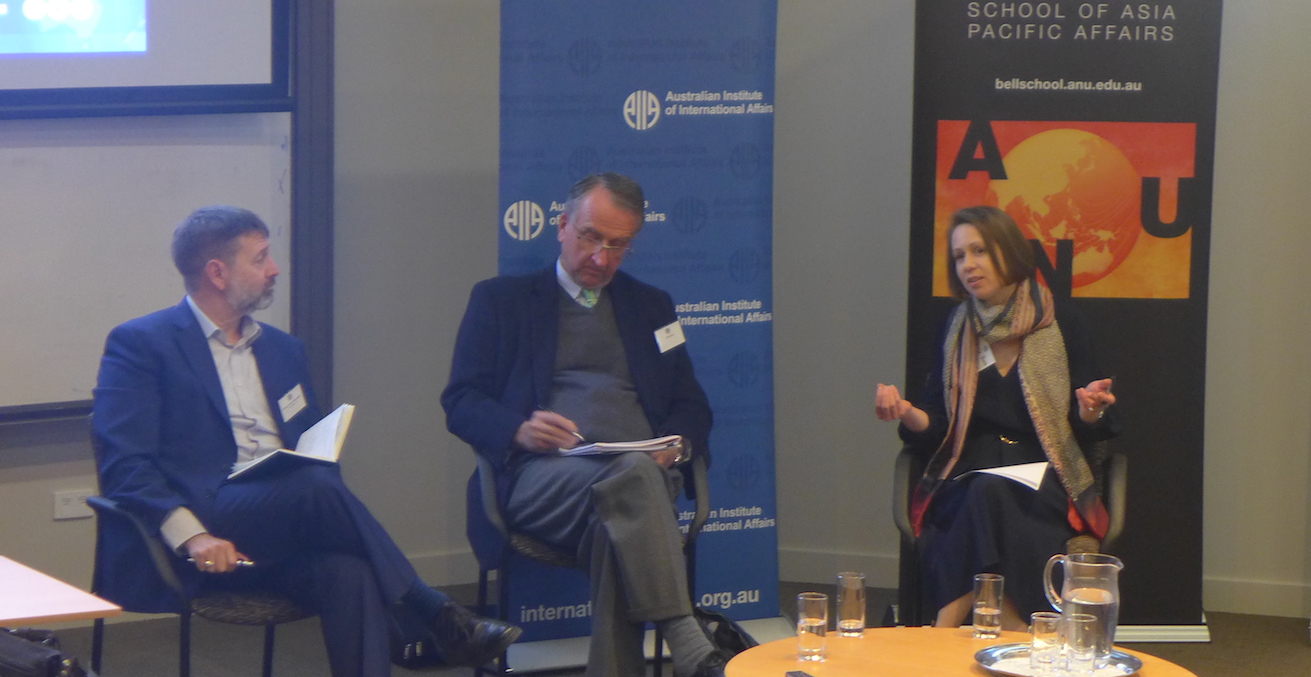Three Images of the Rules-Based Order

How is the concept of rules-based order currently employed in debates and discussions as to its existence, fragility, nature and content?
How is the concept of ‘rules-based order’ currently employed in debates and discussions as to its existence, fragility, nature, and content? In this short piece, I will briefly outline (to borrow a Waltzian conceptualisation) three ‘images’ of, or ways of thinking about, the rules-based order: as aspiration; as substantive consensus; as a measure of hostility to orthodoxy.
The first image of the rules-based order is as an aspirational phrase that defines either or both an objective – the rules-based order – and/or a mechanism – a rules-based order. Conceptualised as an objective, the rules-based order tends to prioritise the ultimate achievement of a stable, sustainable, generally universal rules-based order as an international good: something to which states and international organisations should and do aspire.
However, the reasons this aspiration should be pursued are varied and depend upon the perspective that the entity in question takes of the second and third images or ways of thinking about the rules-based order. Nevertheless, many of these reasons centre around the aspiration for a settled, predictable, and self-perpetuating stability, leavened by sufficient freedom of manoeuvre to still allow and facilitate (up to a point) the pursuit of competitive state interests.
When conceptualised as a mechanism, the aspirational image of the rules-based order tends to focus upon its character as a series of norm sets, deconfliction processes, dispute resolution options, and a ‘language’ of international intercourse (which is often associated with international law, but is broader than international law). A key set of counter-intuitive and often forgotten norms central to the rules-based order as mechanism, however, are the ‘identification’ norms (to paraphrase Benjamin Zala): that is, the criteria, howsoever expressed and as generally set by the major powers, that describe and define who gets to make the rules, and how they are made and enforced. A previous iteration of this image of the rules-based order was, arguably, the Concert of Europe, which was considered at the time to be both a perfected stabilisation outcome as well as a mechanism for maintaining that outcome.
A second common image of the rules-based order is as the sum of its normative parts: a set of substantive norms that underpin and express something like an international consensus. However, whilst at any given time there is often a mainstream or orthodox rules-based order of this type, it is rare that there is only ever a single such rules-based order. Indeed, perhaps the ‘clash’ is not of civilisations, but rather of competing conceptions of the rules-based order. Currently, the orthodox or mainstream rules-based order is arguably the liberal-internationalist image: focussed upon the advancement of human rights, radical sovereign equality, the facilitation of trade and investment, democratisation, and peaceful resolution of disputes. However, it is important to note that this is not simply a ‘Western’ rules-based order. Some of the key proponents and actors supporting this rules-based order in our region are Japan, South Korea, Singapore, and so on.
But this is not the only image of a rules-based order on offer; indeed it can fairly be said that the liberal-internationalist rules-based order is currently under escalating pressure, and its long-term aim of locking in liberal-internationalist gains and normative values is increasingly contested. One need only refer to the clear and overt alternative conceptions of the rules-based order espoused by Russia and China to see that the contested but incrementally advancing dominance of the liberal-internationalist rules-based order between 1945 and the mid-1980s, and the 30-year, almost-hegemonic dominance of that rules-based order since the late 1980s, is drawing to a close. This means that currently insurgent rules-based orders – such as the nationalist-imperialist, almost Tsarist rules-based order of modern Russia, with its clear disdain of Western human rights ‘overreach’ and its willingness to reinterpret fundamental rules-based order norms such as non-intervention – will continue to gain credibility with some states unhappy with the liberal-internationalist image of the rules-based order.
The third way that we seem to talk about the rules-based order is in terms of categorising states as compliant or non-compliant with the ‘orthodox’ image of the rules-based order, or as maintainers or insurgent under-miners of that rules-based order. However, whilst there are undoubtedly some uber-maintainers of the current liberal-internationalist rules-based order (core EU, Nordics, and some others) most states that wish to buttress the liberal-internationalist rules-based order tend to have a ‘most of the rules, most of the time’ relationship with it. Thus, we could say, for example, that the US is, at core, a maintainer of the orthodox rules-based order, even though that state routinely challenges that rules-based order, and is often challenged by it.
On the other hand, North Korea, one could argue, demonstrably cares little-to-naught for the orthodox rules-based order but is happy to use its mechanisms (gridlock in the United Nations Security Council) and its language (threat of use of force) to achieve its aims. Similarly for Islamic State – a non-state actor that clearly cared not at all for the vast majority of substantive rules within the orthodox image of the rules-based order, but which nevertheless attempted to leverage the central animating entity status (the state) and one of the key normative concepts (sovereignty) enshrined within that rules-based order.
A third type of relationship with the current image of the orthodox rules-based order is the vacillating approach of Russia and China. These states are clearly keen to maintain and support those aspects of the orthodox liberal-internationalist mainstream rules-based order that support their current national interests, particularly trade and investment freedoms. But they are simultaneously in open defiance of other aspects of the liberal-internationalist rules-based order, particularly as regards what they perceive to be overzealous and norm-distorting human rights overreach, and the modern, narrow, territorial confines placed around the older concept of ‘sphere of influence’.
Rob McLaughlin is Professor of Military and Security Law at the Australian Defence Force Academy, University of New South Wales Canberra. He is Director of the Australian Centre for the Study of Armed Conflict and Society.
This article is based on his remarks at a conference on Australia and the Rules-Based International Order held on 18-19 July organised by the Australian Institute of International Affairs, Department of Foreign Affairs and Trade and ANU Coral Bell School with the support of the Attorney-General’s Department.
This article is published under a Creative Commons Licence and may be republished with attribution.





